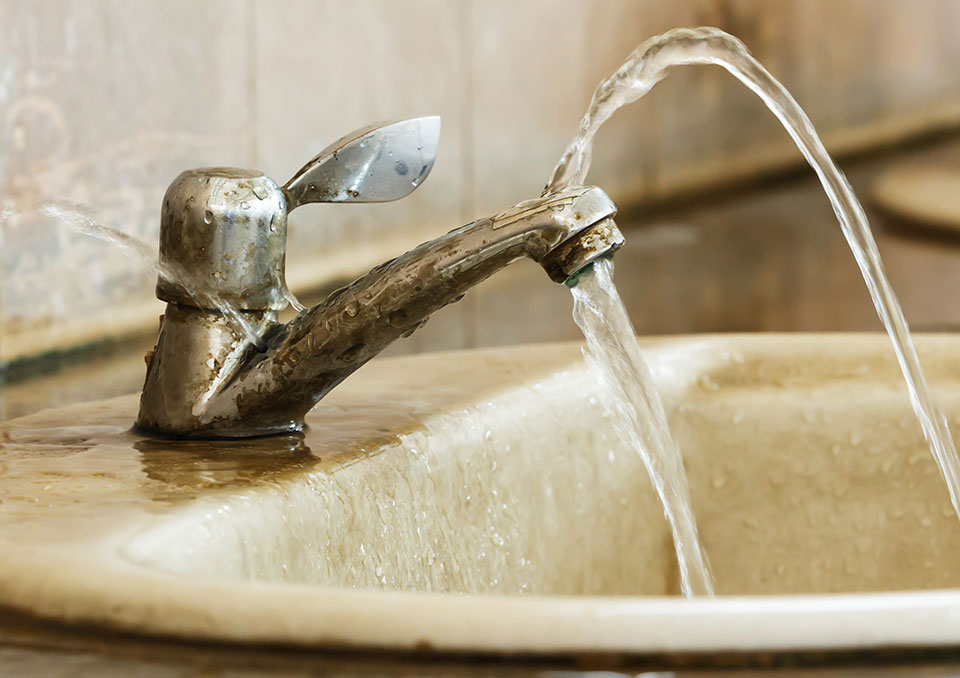We have come across this great article involving Leaky Faucets: Why They Happen & What to Do About Them down the page on the net and believe it made sense to share it with you on this page.

Leaking faucets may feel like a minor trouble, yet their impact goes beyond simply the annoyance of the noise. From drainage to incurring unnecessary monetary prices and health risks, neglecting a trickling tap can lead to different effects. In this write-up, we'll delve into why it's important to resolve this usual home concern without delay and effectively.
Wastage of Water
Environmental Effect
Leaking taps add significantly to water wastage. According to the Environmental Protection Agency (EPA), a single faucet leaking at one drip per secondly can throw away greater than 3,000 gallons of water annually. This not just strains water sources however likewise influences ecological communities and wildlife dependent on them.
Financial Expenses
Boosted Water Expenses
Beyond the environmental impact, trickling taps can pump up water bills considerably. The gathered waste over time equates right into greater energy costs, which could have been stayed clear of with prompt repairs.
Potential Residential Property Damages
Moreover, prolonged trickling can result in harm to components and surfaces bordering the tap. Water buildup can trigger discoloration, corrosion, and even structural concerns if left neglected, leading to additional repair costs.
Health Worries
Mold and Mold Growth
The continuous visibility of moisture from a trickling faucet creates an optimal setting for mold and mildew and mildew development. These fungis not just compromise indoor air quality however also posture wellness risks, specifically for individuals with breathing problems or allergic reactions.
Waterborne Illness
Stationary water in leaking taps can become a breeding place for microorganisms and various other microorganisms, enhancing the danger of waterborne diseases. Contaminants such as Legionella germs grow in stationary water, possibly causing severe health problems when consumed or inhaled.
DIY vs. Professional Repair service
Benefits and drawbacks of DIY Fixing
While some might attempt to take care of a trickling tap themselves, do it yourself repairs include their very own collection of challenges. Without proper knowledge and tools, DIY attempts can intensify the problem or cause insufficient repair services, prolonging the issue.
Benefits of Hiring a Specialist Plumber
Working with a professional plumber makes certain that the underlying cause of the dripping faucet is addressed effectively. Plumbers possess the know-how and equipment to detect and fix tap problems efficiently, saving time and reducing the risk of additional damage.
Step-by-Step Guide to Repairing a Dripping Tap
Tools Needed
Prior to attempting to repair a leaking faucet, collect the necessary devices, consisting of a flexible wrench, screwdrivers, substitute components (such as washers or cartridges), and plumber's tape.
Typical Tap Issues and Their Solutions
Recognize the type of tap and the details issue creating the drip. Common problems consist of worn-out washers, corroded valve seats, or defective O-rings. Describe supplier guidelines or on the internet tutorials for detailed assistance on repairs.
Preventive Measures
Regular Maintenance Tips
To prevent dripping faucets, execute routine upkeep such as cleaning up aerators, evaluating for leakages, and changing worn-out components without delay. Furthermore, consider installing water-saving gadgets or updating to much more reliable fixtures.
Importance of Prompt Services
Dealing with leaking faucets as soon as they're observed protects against additional water wastefulness and possible damage, eventually saving both water and money in the future.
Impact on Residential Or Commercial Property Worth
Perception of Well-Maintained Residential Or Commercial Property
Preserving a residential property in good condition, including dealing with maintenance problems like leaking faucets, enhances its perceived value and desirability among potential customers or lessees.
Impact on Resale Value
Properties with well-maintained plumbing fixtures, consisting of taps, command greater resale values in the real estate market. Dealing with dripping taps can add to a positive impact throughout property inspections and arrangements.
Ecological Obligation
Individual Contribution to Conservation
Taking duty for repairing trickling faucets straightens with broader efforts towards water preservation and environmental sustainability. Every person's actions jointly make a substantial effect on maintaining precious sources.
Sustainable Living Practices
By focusing on prompt repair services and taking on water-saving habits, people contribute to sustainable living methods that benefit both present and future generations.
Final thought
Resolving a dripping faucet goes beyond simple benefit; it's a crucial step towards preserving water, reducing financial costs, and protecting health and wellness and building. Whether through DIY repairs or professional help, acting to repair dripping taps is a tiny yet impactful method to advertise accountable stewardship of sources and contribute to a healthier, much more lasting future.
Most Common Reasons for a Leaky Faucet and How to Stop the Drip
Whether it’s your kitchen faucet leaking or a bathroom faucet leaking, one leaky faucet can waste anywhere from three to 30 gallons of water every single day. If the constant drip-drip-drip doesn’t get your attention, your water bill will. The good news is that, by following a few simple steps, chances are pretty good you can fix the problem yourself.
Why is it dripping?
Before you start taking things apart, let’s break down some of the most common causes of a leaky faucet.
Bad O-ring.
A cartridge is a valve that controls the flow of water into the faucet spout. On cartridge faucets there’s an O-ring—the little disc attached to the stem screw that holds the faucet handle in place. If it’s loose or worn-out, it can cause your sink handle to leak. Of course, the cartridge itself could be worn out. If that’s the case, make sure you replace it with the exact same kind.
Corroded valve seat.
The valve seat connects the faucet and the spout. If the leak seems to be coming from the spout, it might be because a buildup of water sediment has corroded the valve seat.
Worn-out washers or seals.
A leaky spout could be caused by a bad washer that rests against the valve seat. It’s just a matter of time before friction takes its toll. It could also be the wrong size washer or one that’s been installed incorrectly. Water sediments can also corrode inlet and outlet seals.
Water pressure.
If the faucet only drips now and then, or when you turn the handles a certain way, you should probably check your home’s water pressure.
Loose or broken parts.
The adjusting ring and packing nuts in the stream screw can become loose over time, causing your sink handle to leak. Try tightening or replacing the packing nut. If the leak is coming from the pipes underneath the sink, you probably have a broken pipe or fitting. If that’s the case, you should definitely call a plumber.
Know your faucet.
Faucets come in a variety of types. Each one has its own assembly—and its own possible causes of leaks. Learning about the four most common kinds of faucets will help you know how to take them apart and make any repairs.
How to stop a leaky faucet
Fixing that leaky faucet doesn’t have to take a lot of time, money, or expertise. It’s usually a simple matter of replacing a worn-out washer or gasket, a loose O ring, or another part. Chances are really good you can do this yourself if you follow these simple steps.
Shut off the water.
Before you tackle the faucet, cut off the water supply to the sink. There should be one valve for hot and one for cold. Hand-turn them clockwise with your hands till they close. If there are no valves under the sink, head to the basement and shut off the main water supply to the house. Then turn on the faucet until it empties out the water that’s still in the line and you’re ready to start. It’s a good idea to cover the sink drain with a plug or a rag so you don’t lose any small pieces and parts while you’re working.

As a serious reader on , I imagined sharing that piece of writing was really useful. Kindly take the opportunity to share this blog post if you appreciated it. Thanks for taking the time to read it.